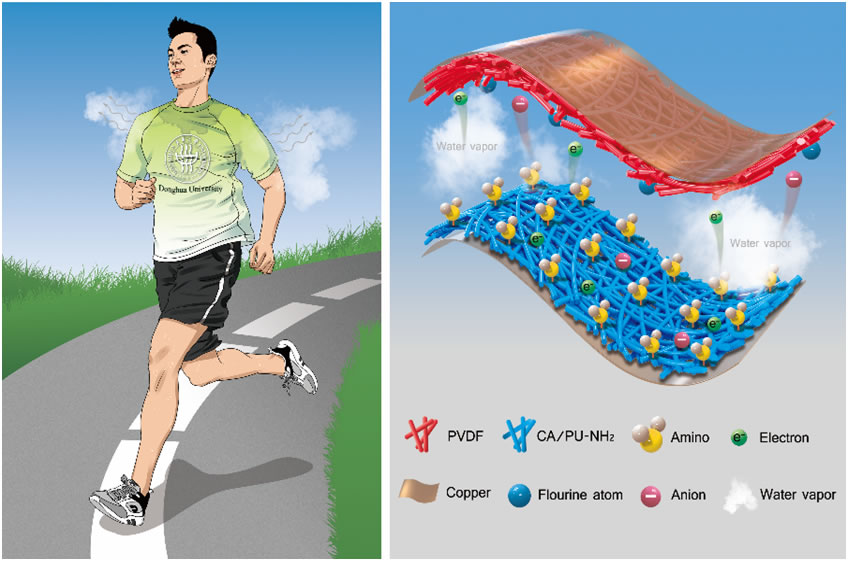Recently, Prof. Bin Ding and Associate Prof. Zhaoling Li in College of Textiles have made significant progress in the wearable mechanical energy harvester. The related research result, entitled “Humidity-resisting triboelectric nanogenerator for high performance biomechanical energy harvesting”, was published in the famous international Nano Energy (Nano Energy, 2017, 40, 282-288).The first author is Jiali Shen who is a master student in College of Textiles and Donghua University is the only correspondence institution.
Nowadays thenumber of wearable electronics is largely increasing and theircommercialization market is substantially expanding, which shows great potential in the wide fields of medical treatment, health monitoring, sports fitness, communication and entertainment. However,the limited power supply of commonly used batteries largely restricted the further applications of wearable electronics andit causes unfavorable inconvenience to terminal customers. Triboelectric nanogenerator (TENG) is based on the coupling effect of triboelectrification and electrostatic induction, which can effectively provide continuous and stable green energy for wearable electronics by harvestingbiomechanical energy from individual people in daily life.However, duringhuman biomechanical movement, it is inevitable to produce plenty of sweat,especially during strenuous exercise or in hot weather, which would largely increase humidityaround human body. As a result, it leads to surface charge dissipation of triboelectric material andsignificantly decreasesthe power output of TENG, which will greatly reduce its practical application.To overcome those limitations, developing a TENG withhumidity resisting properties will be a superior solution to ensurethe stable andsustainable operation of the self-powered wearable electronics.
In this paper, the cellulose acetate/polyurethane (CA/PU) blend nanofibrous membrane with excellent mechanical properties was prepared by the multi-needle electrospinning technology. Then, the blend nanofibrous membrane was modified by polyacrylamide (PAM) solution with different concentrations in the aqueous solution. Theresultant amino modification contributes to enhance the surface potential for thetriboelectric material, which renders the material gainingmore charges. On the other hand, the PAM molecules could provide some transferredmobile ions under high humidity, and finally increase the chargedensity of contacting membrane.
It was found that the HR-TENG composed of the modified CA/PU blended nanofibrous membrane and hydrophobic PVDF nanofibrous membrane showed highelectrical output performance.For the untreated TENG, the electrical output decreased sharplywith humidity increasing. For the amino modified TENG, the electrical output still maintained at a relatively high level even in the high humidity environment up to 90%. The humidity-resisting TENG was rationally connected with a bridge rectifier, energy storage unit (capacitor), voltage regulator (resistance) and final electronic device.Thenthe researchers built a series of self-powered electronicsincluding self-powered thermometer, electronic watch and calculator. The self-powered electronics could be driven byhand tapping,which showed an important and potential application in the wearable electronics field.
This research wasfinancially supported by the National Natural Science Foundation of China, the Fundamental ResearchFunds for the Central Universities and DHU Distinguished Young Professor Program.

An illustration showing the humidity-resistingtriboelectric nanogenerator for highperformancebiomechanical energy harvesting

